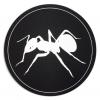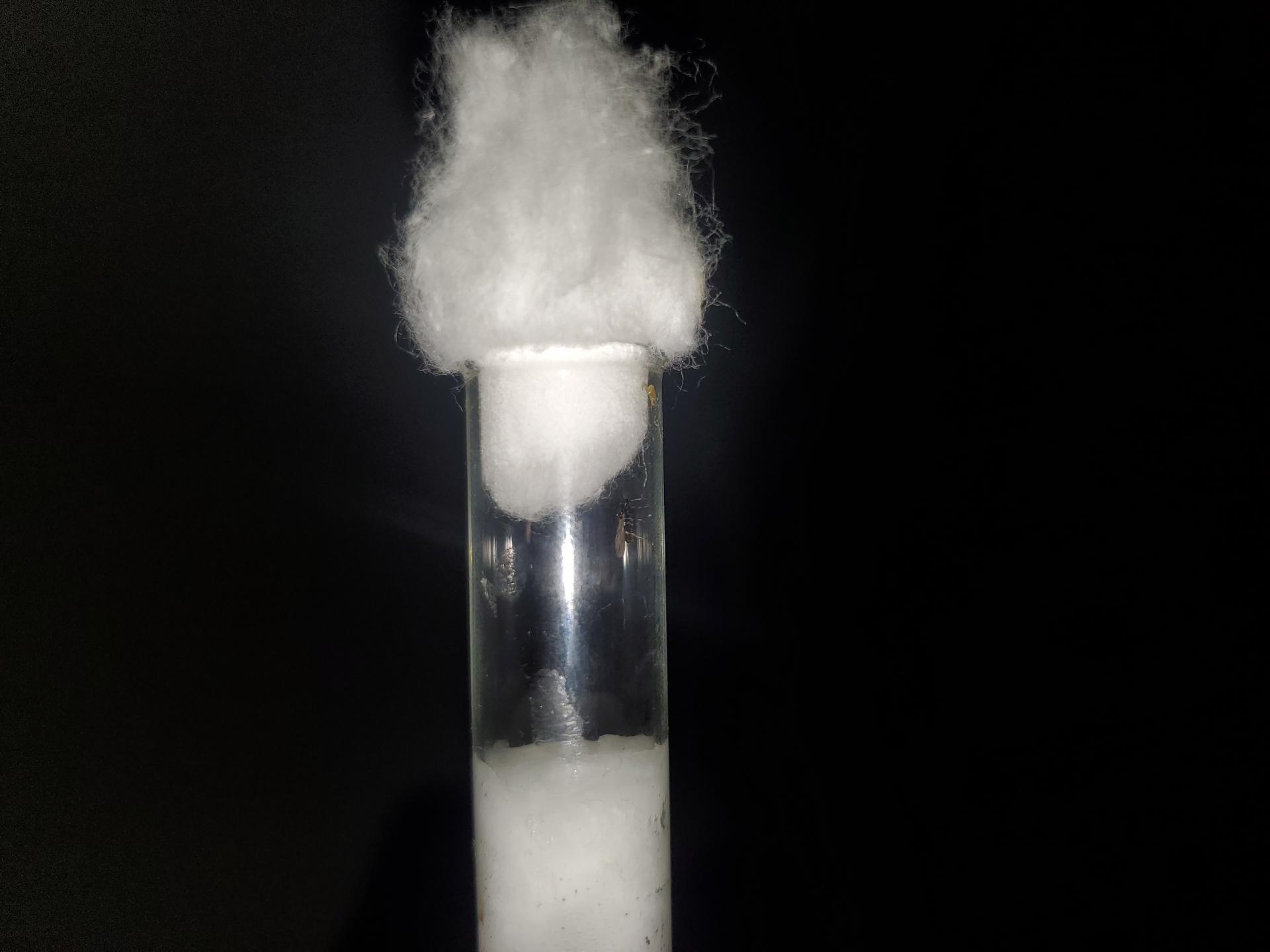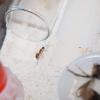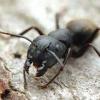- Formiculture.com
- Forums
- Gallery
- Members
- Member Map
- Chat

Is this a queen or a king?
Started By
manik
, Apr 15 2022 6:01 AM
16 replies to this topic
#1
 Offline
-
Posted April 15 2022 - 6:01 AM
Offline
-
Posted April 15 2022 - 6:01 AM
Hi everyone, i was sitting in my car yesterday, and on the window there was this little winged bug that looked like a queen ant, i put it in a test tube, but I'm no sure if is a male, a queen or just a bug, thanks for all the help!
#2
 Offline
-
Posted April 15 2022 - 6:04 AM
Offline
-
Posted April 15 2022 - 6:04 AM
The term king is not used to describe male ants. Try a better photo with a light colored background, so the dark ant is visible.
- Manitobant, RushmoreAnts and Chickalo like this
"The ants are a people not strong, yet they prepare their meat in the summer." Prov. 30:25
Keep ordinary ants in extraordinary ways.
Keep ordinary ants in extraordinary ways.
#3
 Offline
-
Posted April 15 2022 - 6:18 AM
Offline
-
Posted April 15 2022 - 6:18 AM
#4
 Offline
-
Posted April 15 2022 - 6:56 AM
Offline
-
Posted April 15 2022 - 6:56 AM
#5
 Offline
-
Posted April 15 2022 - 7:08 AM
Offline
-
Posted April 15 2022 - 7:08 AM
Ponera pennsylvanica flies at the end of the year and does not look like that at all. This male is definitely Lasiini and the most similar looking genus to this is Prenolepis, which suits the flight time as well.
#6
 Offline
-
Posted April 15 2022 - 2:57 PM
Offline
-
Posted April 15 2022 - 2:57 PM
The color diffrence of the of a queen Prenolepis imparis and a male is a bit confusing.
Edited by azzaaazzzz00, April 15 2022 - 2:58 PM.
Been keeping ants since January of 2021
Always try new things, even if its hard, hard is not impossible. We are smart and it's good to be smart but not too smart for your own good.
Always try new things, even if its hard, hard is not impossible. We are smart and it's good to be smart but not too smart for your own good.
#7
 Offline
-
Posted April 15 2022 - 7:16 PM
Offline
-
Posted April 15 2022 - 7:16 PM
Prenolepis imparis male
Oh really? I was thinking maybe it was a Ponera pennsylvanica queen or male. But... I have little experience up in the colder parts of the U.S. so please take my ID with a grain of salt.
The body isn't quite right for Ponerinae. Definitely a Formicidae. I second Prenolepis imparis.
"God made..... all the creatures that move along the ground according to their kinds (including ants). And God saw that it was good. Genesis 1:25 NIV version
Keeping:
Formica cf. pallidefulva, cf. incerta, cf. argentea
Formica cf. aserva, cf. subintegra
Myrmica sp.
Lasius neoniger, brevicornis
#8
 Offline
-
Posted April 18 2022 - 9:42 AM
Offline
-
Posted April 18 2022 - 9:42 AM
Sure way to tell if Queen or male.. are the antennae straight or bent.
Straight = Male
bent = Queen
Edited by PaigeX, April 18 2022 - 9:42 AM.
- azzaaazzzz00 likes this
Favourite Genus: Polyrhachis
Journal: Main
YouTube: Australian Polyrhachis
Instagram: australian_polyrhachis
May God Bless you.
#9
 Offline
-
Posted April 18 2022 - 2:15 PM
Offline
-
Posted April 18 2022 - 2:15 PM
A quick google search of “male ant” proves that wrong. Head and abdomen shape would be better imo.Sure way to tell if Queen or male.. are the antennae straight or bent.
Straight = Male
bent = Queen
- OiledOlives and azzaaazzzz00 like this
#10
 Offline
-
Posted April 18 2022 - 6:46 PM
Offline
-
Posted April 18 2022 - 6:46 PM
Sure way to tell if Queen or male.. are the antennae straight or bent.
Straight = Male
bent = Queen
Most formicine males have elbowed antennae. You could use eye size (not very good, but it works), body shape, and overall appearance.
- Somethinghmm likes this
Young ant keeper with a decent amount of knowledge on local ant species.
YouTube: https://m.youtube.co...uKsahGliSH7EqOQ (It's pretty dead. Might upload again soon, don't expect my voice to sound the same though.)
Currently kept ant species, favorites have a star in front of their names (NOT in alphabetical order, also may be outdated sometimes): ★ Camponotus irritans inferior, ★ Ooceraea biroi, Pheidole parva, ★ Nylanderia sp., ★ Paraparatrechina tapinomoides, Platythyrea sp., Anochetus sp., Colobopsis sp. (cylindrica group), ★ Crematogaster ferrarii, Polyrhachis (Myrma) cf. pruinosa, Polyrhachis (Cyrtomyrma) laevissima, Tapinoma sp. (formerly Zatapinoma)
Death count: Probably over a hundred individual queens and colonies by now. I cannot recall whatsoever.
YouTube: https://m.youtube.co...uKsahGliSH7EqOQ (It's pretty dead. Might upload again soon, don't expect my voice to sound the same though.)
Currently kept ant species, favorites have a star in front of their names (NOT in alphabetical order, also may be outdated sometimes): ★ Camponotus irritans inferior, ★ Ooceraea biroi, Pheidole parva, ★ Nylanderia sp., ★ Paraparatrechina tapinomoides, Platythyrea sp., Anochetus sp., Colobopsis sp. (cylindrica group), ★ Crematogaster ferrarii, Polyrhachis (Myrma) cf. pruinosa, Polyrhachis (Cyrtomyrma) laevissima, Tapinoma sp. (formerly Zatapinoma)
Death count: Probably over a hundred individual queens and colonies by now. I cannot recall whatsoever.
#11
 Offline
-
Posted April 19 2022 - 10:37 AM
Offline
-
Posted April 19 2022 - 10:37 AM
A quick google search of “male ant” proves that wrong. Head and abdomen shape would be better imo.Sure way to tell if Queen or male.. are the antennae straight or bent.
Straight = Male
bent = Queen
Sure way to tell if Queen or male.. are the antennae straight or bent.
Straight = Male
bent = Queen
Most formicine males have elbowed antennae. You could use eye size (not very good, but it works), body shape, and overall appearance.
well yea. i just went for the bare most simple way to tell. most ants here in Aus you can tell right away if male or not by the non bent antennae so.. i guess other countries not the same.
- ANTS_KL and Leptomyrmx like this
Favourite Genus: Polyrhachis
Journal: Main
YouTube: Australian Polyrhachis
Instagram: australian_polyrhachis
May God Bless you.
#12
 Offline
-
Posted April 25 2022 - 1:23 PM
Offline
-
Posted April 25 2022 - 1:23 PM
A quick google search of “male ant” proves that wrong. Head and abdomen shape would be better imo.Sure way to tell if Queen or male.. are the antennae straight or bent.
Straight = Male
bent = Queen
Sure way to tell if Queen or male.. are the antennae straight or bent.
Straight = Male
bent = Queen
Most formicine males have elbowed antennae. You could use eye size (not very good, but it works), body shape, and overall appearance.
well yea. i just went for the bare most simple way to tell. most ants here in Aus you can tell right away if male or not by the non bent antennae so.. i guess other countries not the same.
I looked up various Australian genera, and of those the males have bent antennae, however it seems to be somewhat less obvious than genera/species here in NA. I'm not sure what the reason for that would be, though I guess they could just be holding their antennae at a different angle in those pictures.
And I'm sorry if my previous post came across as blunt or rude, I didn't intend that and I should have worded it differently.
Edited by Kaelwizard, April 25 2022 - 1:25 PM.
- azzaaazzzz00 and PaigeX like this
#13
 Offline
-
Posted April 25 2022 - 9:08 PM
Offline
-
Posted April 25 2022 - 9:08 PM
Could also be a Camponotus male.
You need better pictures to get an ID.
Hi there! I went on a 6 month or so hiatus, in part due, and in part cause of the death of my colonies.
However, I went back to the Sierras, and restarted my collection, which is now as follows:
Aphaenogaster uinta, Camponotus vicinus, Camponotus modoc, Formica cf. aserva, Formica cf. micropthalma, Formica cf. manni, Formica subpolita, Formica cf. subaenescens, Lasius americanus, Manica invidia, Pogonomyrmex salinus, Pogonomyrmex sp. 1, Solenopsis validiuscula, & Solenopsis sp. 3 (new Sierra variant).
#14
 Offline
-
Posted April 26 2022 - 4:36 AM
Offline
-
Posted April 26 2022 - 4:36 AM
Could also be a Camponotus male.
You need better pictures to get an ID.
It literally isn't lol
#15
 Offline
-
Posted April 26 2022 - 10:46 PM
Offline
-
Posted April 26 2022 - 10:46 PM
I looked up various Australian genera, and of those the males have bent antennae, however it seems to be somewhat less obvious than genera/species here in NA. I'm not sure what the reason for that would be, though I guess they could just be holding their antennae at a different angle in those pictures.
And I'm sorry if my previous post came across as blunt or rude, I didn't intend that and I should have worded it differently.
Its all good. and yea they are all bent in a way but normally if you look at a normal worker ant and queen ant, they are very easy to tell the difference. They (normally always) are way more straight. And when you get down to the 3-5mm males, it looks completely straight.
- Kaelwizard likes this
Favourite Genus: Polyrhachis
Journal: Main
YouTube: Australian Polyrhachis
Instagram: australian_polyrhachis
May God Bless you.
#16
 Offline
-
Posted April 27 2022 - 3:42 AM
Offline
-
Posted April 27 2022 - 3:42 AM
A better image is needed but from what I could discern it is not a Camponotus. Like trying to see a black ant on a black rock on the night of a new moon!!!
#17
 Offline
-
Posted April 27 2022 - 4:21 AM
Offline
-
Posted April 27 2022 - 4:21 AM
I don't understand how this is such a difficult ID. Flight time alone rules out every other species. Zoomed out, it looks like a Prenolepis imparis male. Zoomed in, it looks like a Prenolepis imparis male. Not sure what you guys might think it is, so please say what you think it might be.
- Kaelwizard and PaigeX like this
1 user(s) are reading this topic
0 members, 1 guests, 0 anonymous users


























